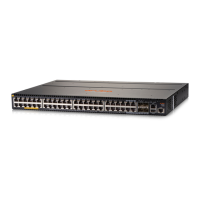Table 32 Cabling Specifications (continued)
9/125 μm (core/cladding) diameter, low
metal content fiber-optic cables,
Single mode fiber
complying with the ITU-T G.652 and
ISO/IEC 793-2 Type B1 standards.
1
A mode conditioning patch cord may be needed for some Gigabit-LX and 10-Gigabit LRM installations. See “Mode
Conditioning Patch Cord” (page 88)“ for more information
Note on 1000BASE-T Cable Requirements
The Category 5 networking cables that work for 100BASE-TX connections should also work for
1000BASE-T, as long as all four-pairs are connected. But, for the most robust connections, you
should use cabling that complies with the Category 5e specifications, as described in Addendum
5 to the TIA-568-A standard (ANSI/TIA/EIA-568-A-5).
Because of the increased speed provided by 1000BASE-T (Gigabit-T), network cable quality is
more important than for either 10BASE-T or 100BASE-TX. Cabling plants being used to carry
1000BASE-T networking must comply with the IEEE 802.3ab standards. In particular, the cabling
must pass tests for Attenuation, Near-End Crosstalk (NEXT), and Far-End Crosstalk (FEXT).
Additionally, unlike the cables for 100BASE-TX, the 1000BASE-T cables must pass tests for
Equal-Level Far-End Crosstalk (ELFEXT) and Return Loss.
When testing your cabling, be sure to include the patch cables that connect the switch and other
end devices to the patch panels on your site. The patch cables are frequently overlooked when
testing cable and they must also comply with the cabling standards.
Note on HP Smart Rate 2.5 Gb/s Cable Requirements
The 2.5 Gb/s Smart Rate operates on cable installations that are designed to support 1000BASE-T
operation. The cabling installation must meet the 1000BASE-T link segment characteristics
described in IEEE 802.3-2012 and additionally the Category 5e or Class D limits described in
the ANSI/TIA/EIA 568-C.2 and ISO/IEC 11801 standards, respectively.
Note on HP Smart Rate 5Gb/s Cable Requirements
The 5 Gb/s Smart Rate operates on the majority of Category 5e and Category 6 cable installations.
Category 5e or Class D installations must meet the ANSI/TIA/EIA 568-C.2 or ISO/IEC 11801
transmission parameter limits extended to 200MHz. Category 6 or Class E installations must
meet their respective transmission parameter limits as described in ANSI/TIA/EIA 568-C.2 or
ISO/IEC 11801.
Also, to transmission performance, 5 Gb/s Smart Rate can be sensitive to alien noise from other
cables in close proximity or background noise from the environment. Therefore, cabling must
additionally be tested for Alien Near-End Crosstalk (ANEXT) and Alien Equal-Level-Far-End
Crosstalk (AELFEXT). Depending on the cabling installation, the magnitude of alien crosstalk
may further limit the maximum supported cabling distance.
It is recommended that cable dressing be done carefully and in compliance with recommendations
in the TIA TSB-155-A and ISO/IEC TR-24750.
Note on 10GBASE-T Cable Requirements
The Category 6 networking cables that work for 1000BASE-T connections may work for
10GBASE-T, as long as the distance is less than 55m and the cable installation has been tested
for compliance to IEEE requirements. But, for the most robust connections, you should use
cabling that complies with the Category 6A or Category 7 specifications, as described in the
TIA-568-C (ANSI/TIA-568-C.2) and ISO/IEC 11801 standards. 10GBASE-T is a sophisticated
technology that relies upon high quality cable installations. It is sensitive to Alien Near End
Crosstalk (ANEXT) which can arrive upon the cable due to cables placed in close proximity to
86 Cabling and Technology Information

